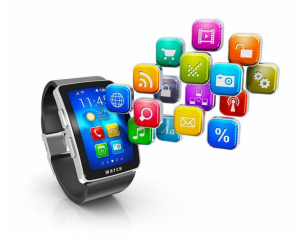From fitness trackers such as FitBit to smart wearables such as the Apple Watch and Google Glass, companies are coming up with innovative ways to bring wearable technology to the forefront, thus opening up another untapped portal of information into users’ lives. The question is: “What data are wearables sharing to the world?” For fitness trackers such as FitBit or Jawbone UP, the device tracks activity data such as steps taken and distance traveled; more advanced devices contain geolocation and heart rate monitoring. In both devices, sleep pattern is tracked by movement and internal algorithms. The trackers also have internal antennas (e.g. NFC or Bluetooth) to have wireless sync capabilities with a computer or smartphone. With these fitness trackers, data may be uploaded onto the manufacturers’ servers and into each respective user’s online profile instance that tracks historical data. When one factors inputting such data as activities completed and food eaten, a user’s profile can be evaluated to provide valuable information about the individual and his or her habits. The recently released Apple Watch tracks not just the fitness tracking data, but many of the traditional items found on a smartphone such as calendar items, emails, text messages, music, pictures and contacts. Another key component of the Apple Watch is Apple Pay, where a user can securely pay for financial transactions by using a near field communication (NFC) reader. Although Apple claims that individuals who use this payment system can’t be tracked, Apple Pay keeps a record of the last ten transactions on the device. From a digital evidence standpoint, syncing the watch to the smartphone must be completed to have the most current user data available on the smartphone for preservation. Lastly, Google Glass records audio, video and takes photos. Google Glass users can also browse the internet or favorite sites such as Facebook. It can also track location and provide directions using GPS. Much like the Apple Watch, Google Glass can store what it has recorded until it can connect to the internet (via Ethernet or tethered to a smartphone) and uploads the data into the corresponding Google Cloud account. The most pressing issue with the Google Glass is privacy, where someone can covertly record audio, video and take photos with a subtle facial gesture such as a wink. As a result, Google has temporarily halted selling the consumer version of the product. In the near future, surveillance of any individual can be done if there are facial recognition applications that would be used on a passerby which would link to that individual’s social media accounts such as Facebook or Twitter. In time, wearables will have a plethora of downloadable applications which share more information about individuals and their habits. We are just at the tip of the iceberg for wearables which represents a rich source of digital evidence for investigators and attorneys.
